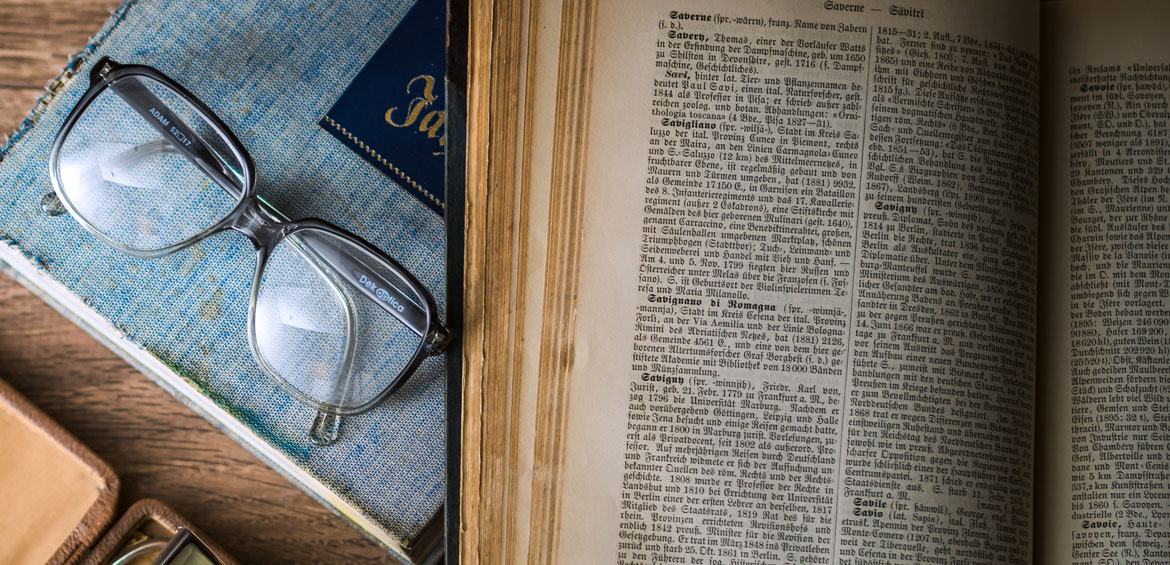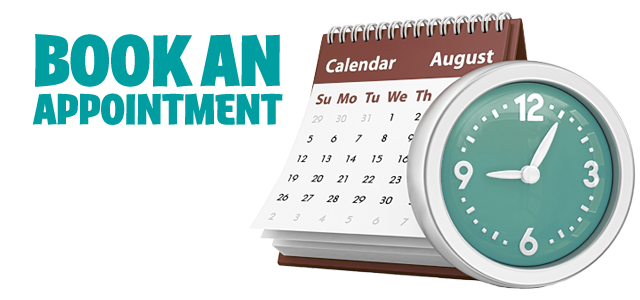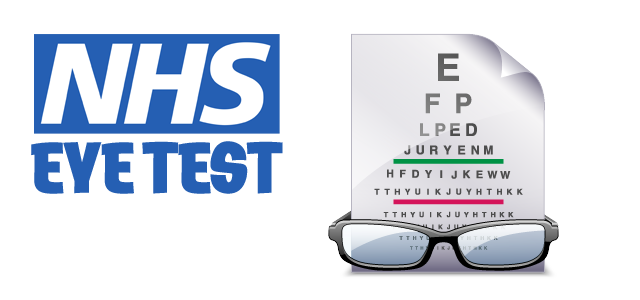 Answer: A full eye examination will take up to 40 minutes and will involve the optician taking details of your history and any problems you may be having with your eyes. Your vision will be measured and any prescription will be assessed, this involves reading letters from a chart and looking at different lenses to find the most suitable one for you. The optician will check the health of your eyes and how your eyes work together. Additional tests will be performed depending on your age / history and requirements such as colour vision testing, measuring the pressure in the eye, taking a picture of the retina and visual field testing. At the end of the test the optician will discuss any prescription found and the best type of spectacles or contact lenses that will be most suitable for you.
Answer: A full eye examination will take up to 40 minutes and will involve the optician taking details of your history and any problems you may be having with your eyes. Your vision will be measured and any prescription will be assessed, this involves reading letters from a chart and looking at different lenses to find the most suitable one for you. The optician will check the health of your eyes and how your eyes work together. Additional tests will be performed depending on your age / history and requirements such as colour vision testing, measuring the pressure in the eye, taking a picture of the retina and visual field testing. At the end of the test the optician will discuss any prescription found and the best type of spectacles or contact lenses that will be most suitable for you.
![]()
Jack Brown Eyecare, Edinburgh Opticians.
Email: info@jbeyecare.com
Jack Brown Eyecare Branches
30 Elder Street, Edinburgh EH1 3DX
Tel: 0131 557 3531
Open in Google Maps
Westside Plaza, Edinburgh EH14 2SW
Tel: 0131 442 2333
Open in Google Maps

 Answer: All eye examinations in Scotland are now FREE on the NHS every two years for most people aged 16 to 60. An annual eye examination is advised for the following groups:
Answer: All eye examinations in Scotland are now FREE on the NHS every two years for most people aged 16 to 60. An annual eye examination is advised for the following groups:
- Children under 16 years of age
- Adults over 60 years of age.
- Those with Diabetes or Glaucoma / Ocular Hypertension
- Those who are over 40 with an immediate relative with Glaucoma
Certain people other than those mentioned above will also be recommended a test within two years but your optician will advise in these cases. Contact lens fitting and check ups are not covered on the NHS and these appointments may be chargeable.
 Answer: NHS spectacles were discontinued in 1989. The NHS now operates the voucher system which may entitle certain people to a voucher, dependant on their prescription and the type of spectacles that are required, towards the cost of their spectacles. The categories that are normally entitled to a voucher are listed below:
Answer: NHS spectacles were discontinued in 1989. The NHS now operates the voucher system which may entitle certain people to a voucher, dependant on their prescription and the type of spectacles that are required, towards the cost of their spectacles. The categories that are normally entitled to a voucher are listed below:
- Children under 19 and in full time education
- Those on the following benefits, Income Support, Income-based Jobseeker's Allowance, Income related Employment Support Allowance, A valid NHS Tax Credit Exemption Certificate, Pension Credit guarantee credit.
- Those in receipt of an HC2 or HC3 certificate (partial help).
- Those prescribed a complex prescription.
 Answer: There are three different kinds of professionals involved with the care of the eyes, so it may not come as a surprise to you that there is some confusion over who does what.
Answer: There are three different kinds of professionals involved with the care of the eyes, so it may not come as a surprise to you that there is some confusion over who does what.
- An Optician is a technician trained to fill prescriptions for lenses written by optometrists and ophthalmologists. Opticians are trained to make glasses, fit eyeglass lenses into frames, and adjust frames to people's face.
- Optometrists are defined as healthcare professionals trained and licensed to provide primary eyecare services. These services include; comprehensive eye health and vision examinations, diagnosis and treatment of eye diseases and vision disorders, detection of general health problems, the prescription of glasses and contact lenses, low vision rehabilitation, vision therapy and medication, the performance of certain surgical procedures, and the counseling of patients regarding their surgical alternatives and vision needs.
- An Ophthalmologist is a medical doctor who specializes in eye health and disease.
 Answer: You should always choose an eye care specialist with the correct training to meet your personal needs. If you have complicated vision problems or health conditions your best bet is likely an ophthalmologist. You may need to see an optometrist for non-complicated vision problems or if you need a prescription for corrective lenses.
Answer: You should always choose an eye care specialist with the correct training to meet your personal needs. If you have complicated vision problems or health conditions your best bet is likely an ophthalmologist. You may need to see an optometrist for non-complicated vision problems or if you need a prescription for corrective lenses.
Make sure when choosing a specialist that you examine their credentials and experiences. You want to confirm they offer the kinds of services you require. Most ophthalmologists and opticians will provide you with relevant qualifications on your request. You can always confirm their credentials by contacting the General Optical Council.
Experience is just as important as proper credentials. If you have complicated eye conditions you may need to seek a more experienced ophthalmologist or optometrist. Many people find a good specialist simply by getting a referral from someone else. Ask friends or family members if they know a qualified practitioner you can visit.
You'll also want to make sure you select a specialist that offers a wide range of services and the types of services you need. If you prefer to consider alternatives like LASIK surgery for example, you should consult with a provider that offers this service or has experience with LASIK. You can always call ahead of time to review a provider's qualifications.
 Answer: No. Once you start wearing glasses you prefer the new clear image so, when you take your glasses off, the image you see seems worse by comparison but, in fact, it hasn't changed.
Answer: No. Once you start wearing glasses you prefer the new clear image so, when you take your glasses off, the image you see seems worse by comparison but, in fact, it hasn't changed.
 Answer: Generally we would start testing children at about age 3 years, however if you notice any changes in your child's vision or that they seem to have a turn in one eye you should bring your child in to have their eyes examined earlier. We can use a wide range of tests on children and even have picture charts if your child is too young to know letters.
Answer: Generally we would start testing children at about age 3 years, however if you notice any changes in your child's vision or that they seem to have a turn in one eye you should bring your child in to have their eyes examined earlier. We can use a wide range of tests on children and even have picture charts if your child is too young to know letters.
 Answer: Bifocals are basically lenses which have two sections with different focuses. Generally they have distance vision in the top half and near vision in the bottom half but they can also be used for intermediate and near vision. The bottom half of the lens comes in different shapes or segments for example round shaped or flat at the top and even right across the lens, this is called an executive bifocal.
Answer: Bifocals are basically lenses which have two sections with different focuses. Generally they have distance vision in the top half and near vision in the bottom half but they can also be used for intermediate and near vision. The bottom half of the lens comes in different shapes or segments for example round shaped or flat at the top and even right across the lens, this is called an executive bifocal.
Varifocals are lenses which change gradually from distance vision in the top part to reading in the bottom part without any "lines of change" showing on the lens. The earliest lens of this type was named "Varilux" and is still one of the leading brands although with advances in technology the lenses of today perform very much more successfully than the earlier types.
 Answer: It is likely you have a high prescription. With the much thinner and lighter plastic lenses that are available now, combined with a lightweight titanium or plastic frame, there is no reason why you can't have much more attractive glasses. Our opticians can advise and even demonstrate the different types of lenses available to make your glasses much thinner and lighter.
Answer: It is likely you have a high prescription. With the much thinner and lighter plastic lenses that are available now, combined with a lightweight titanium or plastic frame, there is no reason why you can't have much more attractive glasses. Our opticians can advise and even demonstrate the different types of lenses available to make your glasses much thinner and lighter.
 Answer: For most people we recommend having your eyes tested every two years. Although if you are over 60, are diabetic, suffer from glaucoma or are over 40 with an immediate family member with glaucoma a yearly eye test is advised. Children under 16 are also advised a yearly test normally. In some circumstances your optician may recommend more frequent tests.
Answer: For most people we recommend having your eyes tested every two years. Although if you are over 60, are diabetic, suffer from glaucoma or are over 40 with an immediate family member with glaucoma a yearly eye test is advised. Children under 16 are also advised a yearly test normally. In some circumstances your optician may recommend more frequent tests.
 Answer: These are lenses which have one fixed focus and can be for distance vision, near vision or intermediate vision. For example driving glasses, reading glasses or computer glasses.
Answer: These are lenses which have one fixed focus and can be for distance vision, near vision or intermediate vision. For example driving glasses, reading glasses or computer glasses.
 Answer: Obviously, you should always have up to date distance prescription for driving. Single vision distance glasses would be an excellent choice but bifocals and varifocals would also be suitable. Plastic lenses are lighter and safer than glass lenses in an accident. Anti-reflection coatings on the lenses will help to reduce reflections and glare, especially for night driving. It is advisable to keep a spare pair of prescription glasses and also a pair of prescription sunglasses in the car.
Answer: Obviously, you should always have up to date distance prescription for driving. Single vision distance glasses would be an excellent choice but bifocals and varifocals would also be suitable. Plastic lenses are lighter and safer than glass lenses in an accident. Anti-reflection coatings on the lenses will help to reduce reflections and glare, especially for night driving. It is advisable to keep a spare pair of prescription glasses and also a pair of prescription sunglasses in the car.
 Answer: The common complaint is "My arms aren't long enough!" or "Newspapers are using smaller print these days". This is a normal and natural change that we all unfortunately suffer from like (dare I say it?) wrinkles. This is called Presbyopia and gradually occurs after the age of about 40 when the natural lens inside the eye hardens with age. Most people notice a change in their fifties when they have to hold objects further away to see them clearly. We would advise a full eye examination to check your eyes are healthy and to determine what type of spectacles or contact lenses would be advisable.
Answer: The common complaint is "My arms aren't long enough!" or "Newspapers are using smaller print these days". This is a normal and natural change that we all unfortunately suffer from like (dare I say it?) wrinkles. This is called Presbyopia and gradually occurs after the age of about 40 when the natural lens inside the eye hardens with age. Most people notice a change in their fifties when they have to hold objects further away to see them clearly. We would advise a full eye examination to check your eyes are healthy and to determine what type of spectacles or contact lenses would be advisable.
 Answer: There is nothing to stop you from doing so but, there could be an underlying reason why your vision is blurring so an examination first would be best to check the health of your eyes. I find that people who choose their specs "over the counter" generally choose a power that is too strong and so they weaken their focussing muscles. Also if you have eyes that are different or you have astigmatism you may not find them as sharp or balanced correctly for your eyes.
Answer: There is nothing to stop you from doing so but, there could be an underlying reason why your vision is blurring so an examination first would be best to check the health of your eyes. I find that people who choose their specs "over the counter" generally choose a power that is too strong and so they weaken their focussing muscles. Also if you have eyes that are different or you have astigmatism you may not find them as sharp or balanced correctly for your eyes.
 Answer: Yes! Years ago it was very difficult to correct astigmatism with contact lenses, hard lenses were traditionally used. Now we can correct astigmatism with disposable soft contact lenses and daily disposable lenses are even available now to correct up to a certain level of astigmatism. Please feel free to ask if you are suitable.
Answer: Yes! Years ago it was very difficult to correct astigmatism with contact lenses, hard lenses were traditionally used. Now we can correct astigmatism with disposable soft contact lenses and daily disposable lenses are even available now to correct up to a certain level of astigmatism. Please feel free to ask if you are suitable.
 Answer: The lenses you have heard of use the technique of Orthokeratology or Ortho K to mould the cornea to correct short-sightedness and mild degrees of astigmatism. At Jack Brown Eyecare we have our own brand of Ortho K lenses called Nocturnal which use computer aided design to create a lens unique to you which will correct your short sightedness. The lenses are worn at night and then removed in the morning. Most people have stable vision after about 10 days and the lenses are worn each night as a retainer. The lenses are made of a rigid gas permeable material with a high oxygen transmission and as they are worn at night they are generally very comfortable. This technique has been around for a long time but really became perfected a few years ago with computer aided design and is considered very safe.
Answer: The lenses you have heard of use the technique of Orthokeratology or Ortho K to mould the cornea to correct short-sightedness and mild degrees of astigmatism. At Jack Brown Eyecare we have our own brand of Ortho K lenses called Nocturnal which use computer aided design to create a lens unique to you which will correct your short sightedness. The lenses are worn at night and then removed in the morning. Most people have stable vision after about 10 days and the lenses are worn each night as a retainer. The lenses are made of a rigid gas permeable material with a high oxygen transmission and as they are worn at night they are generally very comfortable. This technique has been around for a long time but really became perfected a few years ago with computer aided design and is considered very safe.
For more information click here.
 Answer: It is possible to swim in some types of contact lenses with goggles. Some people find their eyes a bit stingy after swimming with their contact lenses because of the chemicals found in some pools so daily disposables are very useful for sports such as swimming so you can throw them away afterwards. Prescription swimming goggles are also available now in a wide range. Your optician will be able to advise you on the best option for your prescription and visual needs.
Answer: It is possible to swim in some types of contact lenses with goggles. Some people find their eyes a bit stingy after swimming with their contact lenses because of the chemicals found in some pools so daily disposables are very useful for sports such as swimming so you can throw them away afterwards. Prescription swimming goggles are also available now in a wide range. Your optician will be able to advise you on the best option for your prescription and visual needs.
text size >


